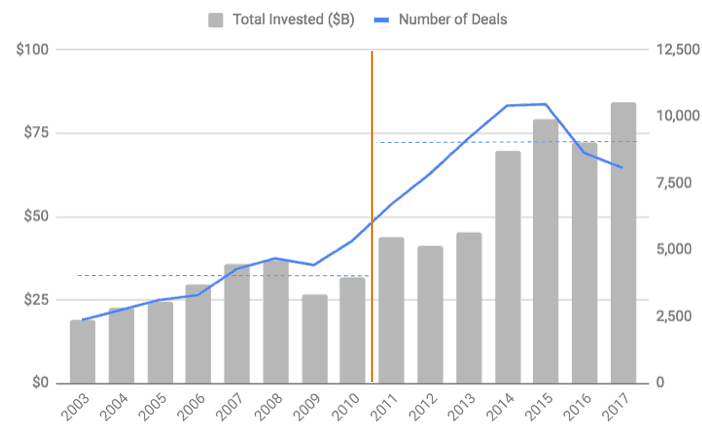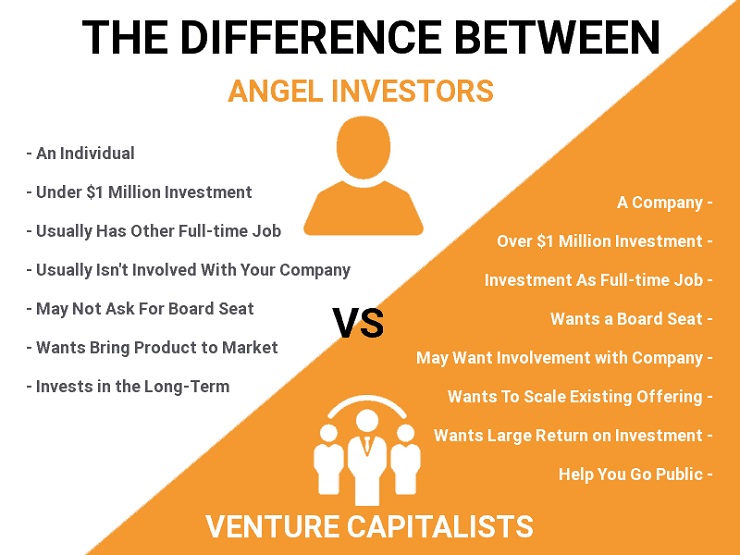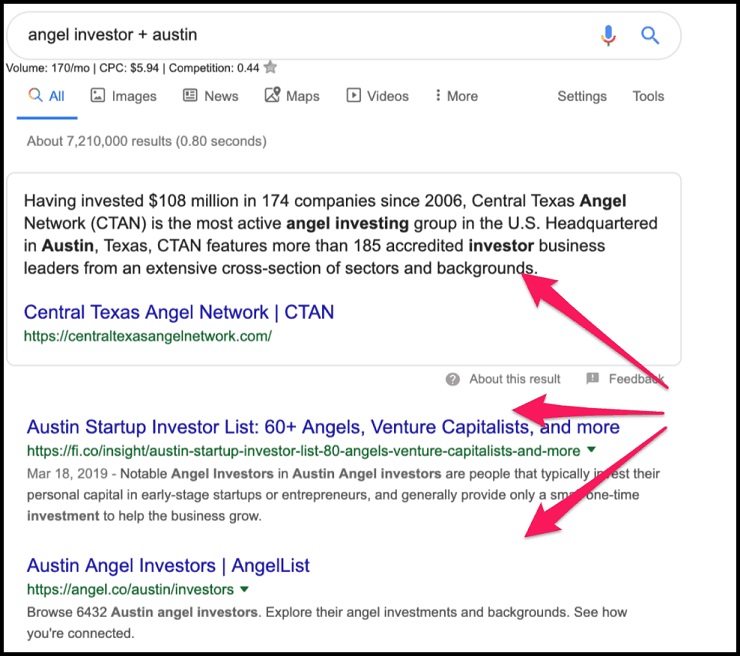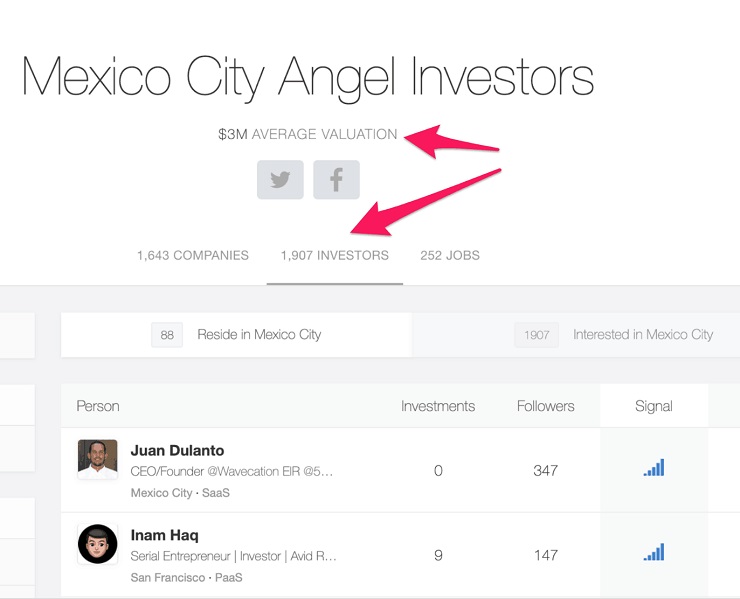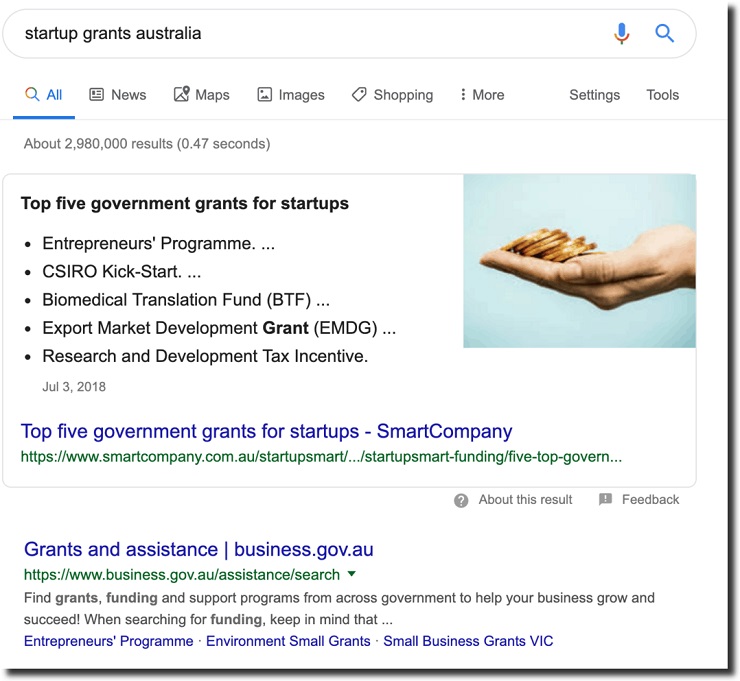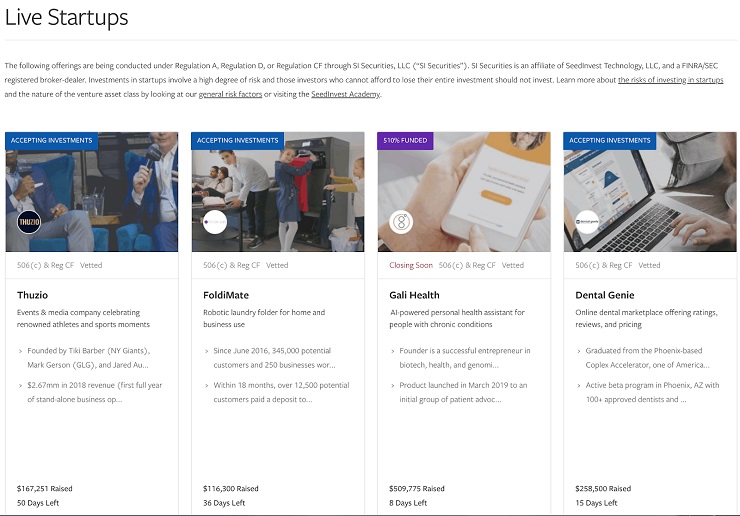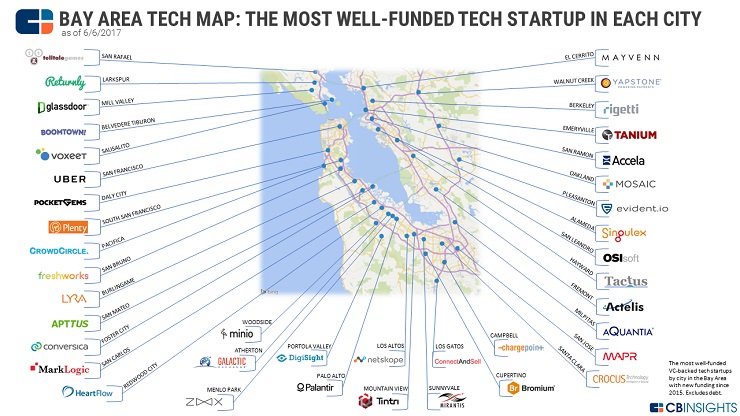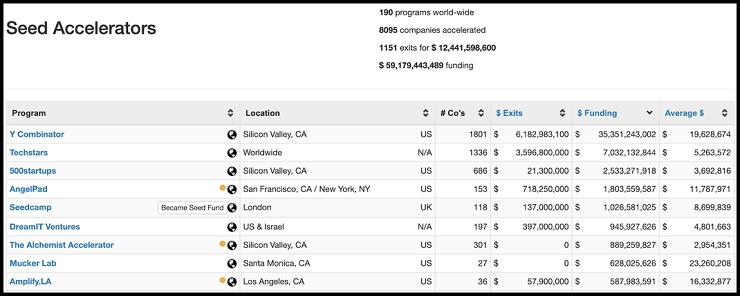You’ve spent months building your startup. You’ve validated your idea through user feedback until you’re confident you’ve hit product/market fit. Your startup is ready to scale. All you need is money to fuel your growth engine.
Fortunately, there’s never been an easier time to find investors for a startup. Compared to 15 years ago, US-based VC firms invested 400% more in startups, hitting an all-time high of almost $100 billion in 2018.
But venture capitalists, while abundant, aren’t the only option you have to raise capital for your startup. They’re not even the best one. In reality, there is no best option, as the ideal funding solution for any given business could be totally different than another, depending on some key factors.
What you need to do is figure out the right type of investors to approach for your startup, track them down, and pitch them your startup idea. In this article, we’re going to focus on those first two critical steps in the process
If you want to know more about choosing and finding the right investors for your startup, this article will help you come to the right decision by outlining the many options and first steps for each.
Let’s get started.
FREE MASTERCLASS: How To Start a Tech Startup And Get Your First Customer In 60 Days
Pitch Your Idea to Angel Investors and Venture Capitalists
Let’s start with the big one, and the one most of us will be familiar with. Assuming you’ve got a minimum viable product (MVP) and have found product/market fit, there’s a decent chance investors will be interested in putting their money into your hands so you can work it.
The key lies in knowing how to find and pitch them.
To start, you want to separate between angel investors, who often work individually and risk their own money, and venture capital firms, which are made up of entire teams of seasoned investors—some of whom have started and exited their own multimillion-dollar startups— who now invest other people’s money.
If you’re raising your first seed round ever—that is, the first round of capital that startups raise—angel investors are the perfect match for you. If you have no or few connections, no startup experience, and are still learning the ropes of entrepreneurship, the chances of getting funded through angel investors are much higher than with a venture capital firm.
That’s not to say you can’t get funding with the latter, but it’s much easier to get funding with the former. As the Startups.com team says, “angels are often one of the more accessible forms of early-stage capital for an entrepreneur and as such are a critical part of the equity fundraising ecosystem.”
Regardless of whether you work with a VC firm or an angel investor, a key aspect you need to consider first is the goal of your funding.
How much do you want to raise? There’s no right or wrong answer as it depends on your needs and goals. If you’re not sure about this number, then take a look at the helpful guide Mark Suster, a partner at Upfront Ventures, wrote on the subject.
Once you know your funding goal, you need to adapt your pitch to the right investor.
David S. Rose, founder of angel investor team New York Angels, weighs the different options entrepreneurs have when looking to raise given amounts of money:
- If you want to raise up to $25,000, he recommends you fund your startup on your own with savings, loans, and credit cards.
- If your funding goal ranges between $25,000 to $150,000, think of your friends, family, and professional connections.
- If your goal is to raise between $150,000 and $1.5 million, then think of angel investors.
- If your goal is between $1.5 million to $10 million, think about contacting early-stage venture capital firms.
We’ll get into these other options later, but if your goal is to hit angel investors and/or venture capital firms, start your search in your city.
If you find no results, move to a broader region (e.g., North Germany, West Australia, etc.) or your entire country.
If Google doesn’t provide enough results, try Angel.co, a platform made for startup founders who want to raise money from angel investors.
If you live in a city, region, or country with few or no angel investors or venture capital firms, then you should consider moving to a region where they’re more plentiful. Depending on how much funding you need, the life of your startup may require such a sacrifice.
Ask Your FFFs (Friends, Family, and Fools)
All joking aside, family and friends fundraising is a viable and important option that’s often overlooked because it’s not as fancy as venture capital or angel investing.
In reality, lots of startup founders raise money from people they know. Fundable reported that 38% of startup founders have raised money from their friends and family, with an average total investment of $23,000. The numbers are from 2012, so a bit dated, but an impressive figure nonetheless, outpacing both VCs and angel investors.
One of the main advantages to this approach is that your pitch will be much simpler in nature, as there’s not so much convincing to do. These people will help you, in part, because they want to see you succeed.
The volume of investment will depend a lot on the size of the pockets of your FFFs, and the trust they have in you. But as David Rose says, these sums tend to range from $25,000 to $150,000. If you come from a wealthy family, or if you have wealthy friends, you obviously have a lot more potential here.
Despite the trust your friends and family have in you, it’s paramount that you take this investment seriously. You need to document everything, as in any investment, in case something bad happens.
You want to secure your positioning and commitment to success, so both parties—your friends and family and yourself—are on the same page for the long term.
Get a Loan or Grant
Startups are a risky business. Because of their high failure rates, banks rarely give loans to startups. The business of banking is all about managing risks, getting money from dependable sources and giving it away to other dependable partners, back and forth, on and on.
Banks can’t depend on startups, so they often end up without a key partner that could help them expand like most traditional businesses would.
Fortunately, this situation has started to change after governmental and financial institutions started to recognize the key role startups play in fostering innovation, productivity, and economic growth.
This shift has driven a resurgence of new financial tools custom made for startups—loans and grants that startups can use without giving away any equity, with low-interest rates, and long-term payment schedules.
The main difference between loans and grants is that the former are given by financial institutions (banks) and need to be paid back, whereas the latter are given by government agencies.
To give you some examples of what these loans and grants look like in real life, here’s a shortlist of options currently available in some of the world’s most advanced economies:
- In the United States, the Small Business Administration (SBA) provides the 7(a) and 504 loan programs, which offer loans up to $5 million. They also have a microloan program that offers up to $50,000, to be given away by a specific list of providers you can find here .
- In the United Kingdom, you have StartupLoans.co.uk, a company that offers loans up to £25,000, with fixed annual interest rates of 6%, and repayment terms up to 5 years.
- In the European Union, the European Investment Bank and the European Investment Fund offer different sets of loan programs, including the COSME Program, the InnovFin Programme, the Programme for Employment and Social Innovation (EaSI), and more. Each program varies by its focus, loan volumes, and structure.
- In Australia, you have several institutions that offer loans ranging from A$2,000 all the way up to A$1,000,000.
On the other hand, grants help startups fund themselves through a direct collaboration with governmental institutions. Just as with loans, grants vary from country to country and city to city.
- In the US, grant-making institutions include the Department of Energy, the National Institutes of Health, and even NASA, among others. You can find a large list of these institutions in this post. Grants can range from $150,000 to $1 million (for federal institutions), and smaller for state institutions.
- In the European Union, you can apply for Your Startup program, which gives grants between €50,000 and €2.5 million.
- In Australia, you have several startups grants programs, including the Entrepreneurs’ Program, CSIRO Kick-Start, and Export Market Development Grant (EMDG), among others.
Whether you choose to take a loan or ask for a grant, financial and governmental institutions are making it much easier for startup founders like yourself to get their businesses going. Society will benefit from your innovation, so don’t hesitate to ask for their help.
FREE MASTERCLASS: How To Start a Tech Startup And Get Your First Customer In 60 Days
Use an Online Fundraising Platform
Getting to talk to investors—angels, VCs, or banks—takes a lot of back and forth. From getting in the door to pitching to getting all the paperwork done, fundraising is a time-consuming process.
In recent times, there has been a surge of online fundraising platforms that simplify the entire process. They have become highly popular with sophisticated and accredited individual investors, angels, and even banks and funds looking for new ways to invest their money.
Some of the most popular platforms that serve this purpose include:
These sites work similarly to popular crowdfunding platforms like Kickstarter and Indiegogo, as companies showcase their value proposition, team, and story to convince investors to help them raise the money necessary to run and grow their businesses.
The difference is, these fundraising platforms don’t just offer donations, but also debt and equity investments. That means they offer the same deals that a startup founder would get in a traditional investment, but done all online.
Enter an Accelerator or Incubator
To say that startups are in vogue would be an understatement. Most countries want to develop their own “Silicon Valley” within their borders to foster economic growth and innovation. Studies have shown that startups help with the economic growth of the cities and countries where they’re based.
That’s where the concept of accelerators and incubators come into play. Developed as a way to mimic the network effects of Silicon Valley, both types of programs have helped develop “hubs” within different regions of the world.
For example, TechStars is an accelerator founded in Boulder, Colorado in 2006. In the 13 years since its inception, the program has fostered an entrepreneurial hub in the city, which was recently named “the world’s fastest rising tech hub.”
If you want to get funding and also get help from experienced people, then consider applying for an accelerator or an incubator. The difference between the two programs is that accelerators take existing companies and focus on helping them grow—or “accelerate,” if you want to use the tech lingo—whereas incubators take new startups that lack a validated product.
When accepted, most programs give their entrepreneurs a modest check to develop their startups. What’s more, these programs introduce their founders to investors, business people, and experts. They also help stage a seed fundraising round.
At the end of the program, which often lasts 90 days, founders have to show their progress in a “demo day.” The showcase isn’t just to show other founders and the program’s headmasters of the progress made, but to pitch the startup to investors.
Aside from Google, you can also use a site like Seed-DB to find a long list of worldwide accelerator programs with their corresponding location, number of companies that have participated in it, and the average funding of each one.
The benefits of applying for an incubator or accelerator go beyond the invested money. If you want to get focused and relevant help from more experienced people, a program like this could be one of the best investments you make for your startup.
Bonus: Use Money From Your Customers!
Throughout this article, you’ve seen five ways to get funding from external sources, including investors, your family, and financial institutions. But if you think about it, we haven’t mentioned one final but key way to fund a startup: your customers.
If you want money to fund your startup, why not get your customers to pay for it before or as you build it?
I’m referring to the process of using preorders—purchases that pay for a product that doesn’t exist yet—to fund the development of the product. This is the exact same process we use at Foundr to validate our online courses, something that has been key to our success.
Many startup founders may want to delay the profitability part to later stages like Facebook or Twitter did back in the day. But let’s be honest: you’re not starting the next Facebook or Twitter. You can push for profitability much sooner.
Your goal at this stage is to hit what the startup community calls “ramen profitability.”
Paul Graham, the legendary startup thought leader and founder of YCombinator, defines this concept as the stage where “a startup makes just enough to pay the founders’ living expenses.”
You may think this attitude is an excuse to lower the bar, but it’s actually a reality check. A good mindset is to make enough to pay for your expenses; you want to break even, that’s all.
Ramen profitability isn’t your end goal. It’s just a stepping stone for a startup that’s trying to reach higher ground. As Graham explains:
Revenues of $3000 a month do not mean the company has succeeded. But it does share something with the one that’s profitable in the traditional way: they don’t need to raise money to survive.
Joel Gascoigne, the founder of social media tool Buffer, explains that having the goal of hitting ramen profitability changed the way he approached his first few years at Buffer:
I now believe that anyone can reach ramen profitability, as long as there is real focus on the goal. Once you are focused on generating revenue, it is a good idea to consider how the type of idea you choose can affect how easy it is to bootstrap and reach ramen profitability.
With that goal in mind, he would then hit profitability in just seven weeks with a social media schedule tool back when the market was saturated with them.
Remember that the ultimate goal of any company is to make money. If you focus on making enough to pay your bills and reinvest everything into building and growing your startup, you will keep control of your equity and build a company that will change the world at the same time.
FREE MASTERCLASS: How To Start a Tech Startup And Get Your First Customer In 60 Days
Here’s How You Can Find Your Investors
With all this said, let’s rewind a little bit and define the steps you need to take to find investors for your startup:
- Pitch your startup to VCs or angel investors
- Get your friends, family, and fools (FFFs) to invest in your startup
- Ask for a startup-friendly loan or a government grant
- Use online fundraising platforms to attract a diverse set of national and international investors
- Apply for an incubator or accelerator
- Get your customers to pay before or during the process of building your tool
With these six options, it will be hard for you not to fund your startup. All it takes is the right approach.
Are you looking to find investors for your startup? If so, what have you tried so far? I want to see your comments below!

